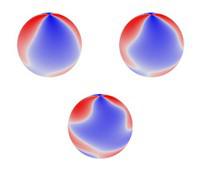 Last week the LIGO Scientific
Collaboration announced the detection of GW150914, ushering us into era of
gravitational wave astronomy. GW150914 was the violent coalescence of two black
holes into a single, rotating black hole. The intense gravitational radiation
emitted during the inspiral and merger of these black holes was detected
directly by the Advanced LIGO interferometers here on Earth. In addition to its
historic role as a first detection, GW150914 was remarkable in that the
relaxation of the resulting black hole into a quiescent state was observed.
This gravitational wave ``ringdown'' can provide a unique measurement of the
mass and spin of the hole, and probes the consistency of our theories of black
hole dynamics. After reviewing this landmark detection, I will describe the
theory of black hole ringdown and its role in future tests of General
Relativity. In addition, I will discuss the exotic predictions of the ringdown
of rapidly rotating black holes, which may be tested by future ground- and space-based
detectors. These include the slow relaxation of these black holes, and the
possibility of turbulent gravitational dynamics near their horizons.
Last week the LIGO Scientific
Collaboration announced the detection of GW150914, ushering us into era of
gravitational wave astronomy. GW150914 was the violent coalescence of two black
holes into a single, rotating black hole. The intense gravitational radiation
emitted during the inspiral and merger of these black holes was detected
directly by the Advanced LIGO interferometers here on Earth. In addition to its
historic role as a first detection, GW150914 was remarkable in that the
relaxation of the resulting black hole into a quiescent state was observed.
This gravitational wave ``ringdown'' can provide a unique measurement of the
mass and spin of the hole, and probes the consistency of our theories of black
hole dynamics. After reviewing this landmark detection, I will describe the
theory of black hole ringdown and its role in future tests of General
Relativity. In addition, I will discuss the exotic predictions of the ringdown
of rapidly rotating black holes, which may be tested by future ground- and space-based
detectors. These include the slow relaxation of these black holes, and the
possibility of turbulent gravitational dynamics near their horizons.

